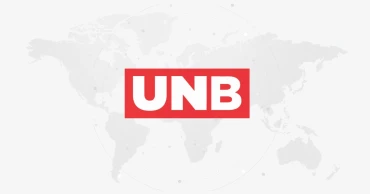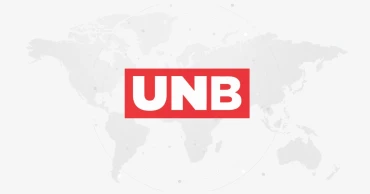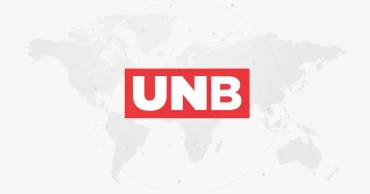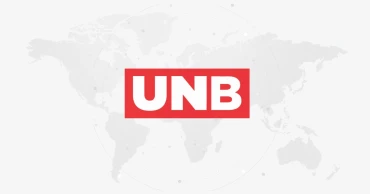ADP
Govt to review slow start in ADP implementation for FY2025-26
Alarmed by a sluggish start in development expenditure, the government will hold an inter-ministerial meeting next week to review why implementation of the Annual Development Programme (ADP) in the first two months of FY2025-26 fell below last year’s level.
Talking to reporters after the ECNEC meeting at the NEC conference room, Planning Adviser Dr Wahiduddin Mahmud on Wednesday said the ADP implementation in July–August this year stood at just 2.39 percent, slightly down from 2.57 percent in the same period of FY2024-25.
Historically, the rate hovers between 3 and 4 percent in the first two months, raising concerns about the slower momentum this year.
“We had expected a faster start this time, but that hasn’t happened. That is why we have convened an inter-ministerial meeting to identify the bottlenecks and find solutions,” the adviser said.
Government scraps contract of BFIU head Shahinul Islam
He pointed to several reasons behind the delay, including frequent revisions, transfers of project directors and contractors leaving projects midway. “Traditionally, project directors are drawn from government officials. But now many are unwilling to take on that role despite the added benefits, which is unusual.”
The adviser also flagged instances of irregularities in certain projects—such as land acquisition without prior approval and unauthorized expenditure beyond sanctioned allocations.
One project was recently shut down after spending a few crores of taka on land acquisition without clearance, although the government will still have to bear Tk 20 crore in costs.
On a positive note, he said ministries and advisers in charge of large sectors like water resources, railways, public works, power, and energy are now taking extra time before inviting tenders.
“They are waiting to apply the new forms and procedures we have introduced to ensure greater discipline and curb irregularities,” he noted.
The government also plans to finalise the revised budget earlier this year—by mid-February—instead of the usual schedule, the adviser informed.
3 months ago
NEC approves Tk 230,000 crore ADP for FY 25-26
The National Economic Council (NEC) on Sunday approved the Annual Development Programme (ADP) amounting to Tk 230,000 crore for the fiscal year 2025–2026.
The NEC also approved a separate development outlay of approximately Tk 8,599.71 crore for autonomous bodies and corporations, Planning Adviser Wahiduddin Mahmud told reporters after the NEC meeting.
The approval came at the NEC meeting at its conference room in the capital chaired by Chief Adviser and NEC Chairperson Prof Muhammad Yunus.
Like previous years, the ADP for FY 2025–26 has been formulated by taking into consideration the country’s available resources, foreign financing, and the overall macroeconomic situation.
Priority in the allocation has been given to ongoing projects funded by foreign loans and grants, poverty alleviation initiatives, employment generation, acceleration of GDP growth, agriculture and agro-based industries, education, health, ICT, science and technology, power generation, disaster management and rehabilitation, and human resource development.
Ecnec approves Tk 244.14 cr project to enhance disaster resilience
Projects under various ministries and divisions that are directly linked to these areas have been given precedence.
The meeting was attended by members of the Advisory Council, the Cabinet Secretary, Principal Secretary to the Chief Adviser, Governor of Bangladesh Bank, members of the Planning Commission, senior secretaries and secretaries of different ministries, and other high-level officials.
7 months ago
Worried about slowdown, govt pushes for speeding up ADP implementation
The Planning Commission is sending letters to all ministries and divisions to complete their ongoing projects as quickly as possible to accelerate the implementation rate of the Annual Development Programme (ADP), which is record low right now.
Aiming to expedite the ongoing development projects, the Planning Commission has taken the move after getting green signal from the Planning Adviser Dr Wahiduddin Mahmud.
According to the planning ministry sources, the step has been taken to avert stagnation of the economy as both public and private investment is significantly low after the fall of Awami League government in August last year.
The commission has asked the ministries and divisions to go for a quick implementation of their respective on going projects confirming there will be no corruptions and irregularities.
“This has not been asked in the past, in the past,” a senior official of commission told unb.
He also said that the Planning Adviser himself has sent letters to all advisers regarding this matter.
“After the changeover, the interim government did not get time to look after this matter, now time has come to do that,” the planning commission official said speaking on condition of anonymity as he is not authorised to talk to the media.
According to the Implementation Monitoring and Evaluation Division (IMED), ADP implementation during the July-November period was 17.1% in the last fiscal, 2023-24, and 18.4% in 2022-23. In the current fiscal year (2024-25) the rate of ADP implementation has been 12.3%, official data say.
Interim govt seeks to rationalise health sector funding in ADP
The size of the current ADP is Tk 278,288.90 crore.
After the fall of the Awami League government on August 5 in the face of a student-led uprising, the interim government led by Nobel Laureate Professor Muhammad Yunus was sworn in on August 8.
IMED data shows that ADP spending in the July-November period amounted to Tk34,214.55 crore, compared to Tk46,857.38 crore in the equivalent period of the previous fiscal year.
IMED officials cited delays in the review the interim government had initiated in all ongoing and newly proposed projects, along with increasing delays in the release of funds, as factors contributing to the slowdown in ADP implementation. Additionally, many contractors abandoned projects after the interim government assumed power in early August.
Adviser Wahiduddin Mahmud recently has apprehended that the country may go under economic recession if the current situation prevails with no new private investment and almost stagnant public development expenditure.
ADP set to shrink significantly in interim govt’s revised budget
“On one side the private investors are not injecting new investment and the public development expenditure is not increased on the other. So, it will create an economic recession,” he told in a briefing after ECNEC meeting.
The adviser said that the private sector is not showing any interest in investment and the interest rate has been increased a lot. “As a result the entrepreneurs are not showing any interest regarding new investment,” he said.
The planning ministry officials apprehended that as the private investment is remaining stalled and public investment is experiencing lowest ever, the economy of the country might go through a tough time in the coming days,
11 months ago
Govt looks to expedite ADP implementation to boost flow of money in economy
The interim government has taken a move to expedite the implementation of the annual development programme (ADP) aiming to induce money flow in the economy.
To expedite the implementation, the interim government has decided to put emphasis on the projects which have been cleared by them since coming to office on August 8.
The government in principle took the decision at a recently held ECNEC meeting chaired by the Chief Adviser Professor Muhammad Yunus.
Govt floats tender for 12 grid-tied solar plants in private sector
The decision came following the record lowest ADP implementation rate of just 8 percent in the first four months of the running 2024-25 fiscal.
According to the Planning Commission sources, directives have been given to accelerate implementation of the projects from now on.
Planning Adviser Dr Wahiduddin Mahmud while briefing reporters about the recently held ECNEC meeting had said that the approved ADP projects by this government would be implemented quickly aiming to accelerate the implementation rate.
“By this way, hopefully we will be able to increase the implementation rate by the end of the running fiscal,” he said.
But he said that the implementation would be done in a proper way.
Planning Commission sources said that the government put special emphasis on the good and innovative projects which are corruption free initially, while implementation of the projects have to be corruption free from any aspect.
The interim government thinks that the previous Awami League government took a number of projects at inflated value that resulted in irregularities during its implementation level, including during the appointment of the contractor.
Illegal sand extraction in Feni continues despite political shift
To prevent corruption and irregularities in the development projects, from the very beginning the interim government tried to stop wastage of public money, and corruption and cut short the number of projects numbers for which the implementation rate suffered a lot, causing a heavy toll on the money circulation in the economy.
“We will definitely scrutinise the projects, we have taken the decision in principle that the good projects that we are thinking about and which got new project directors will be advanced in a speedy manner,” the Planning Adviser said.
The interim government that came into office on August 8 following the student-people uprising has decided to cut short many development projects terming those as the politically motivated ones.
The four months of the running fiscal saw a record low of 8 percent implementation of the development budget, according to the Implementation Monitoring and Evaluation Division (IMED) of the Planning Ministry. The same period last year saw an execution rate of 11.54%.
As per the information from the Planning Commission the rate is 12-13 percent for those government entities which implement projects from their own funding.
Specifically, for the period from July to October of the current fiscal year, the government managed to implement development projects worth Tk 21,978 crore, according to the IMED.
PDB can save US$1.2 billion annually through power sector reforms: IEEFA
The Professor Muhammad Yunus led interim government in its first Ecnec meeting had decided to reduce the development budget.
The National Economic Council (NEC) of the Awami League government approved the Annual Development Programme (ADP) for the fiscal year of 2024-2025 with an outlay of Tk 265,000 crores.
The transport and communication sector got the highest allocation of Tk 70, 687.75 crore (26. 67pc of budget allocation) in the ADP.
With 13,288.91 crore ADP for autonomous bodies or corporations, the total size of ADP for 2024-2025 stood at Tk 278,288.91 crore.
1 year ago
Finance Ministry stresses the importance of balancing recurrent and capital expenditure
The Finance Ministry has highlighted the crucial need for a balanced approach to budgetary allocations between recurrent and capital expenditure, recognizing their collective impact on the country's growth prospects and social welfare. This perspective is outlined in the ministry's document, the 'Medium Term Macroeconomic Policy Statement (2023-24 to 2025-26)', which underscores the different priorities of developed and developing nations in terms of government spending.
Developed countries often prioritize transfers and subsidies, whereas developing economies are more inclined towards investing in social and community services. Despite the positive outcomes from income transfers in enhancing citizens' lives, there is a pressing need to ramp up capital expenditure to cater to the increasing public investment demands and foster the creation of productive assets.
Budgetary classifications broadly categorize government spending into recurrent and capital expenditures. Recurrent expenditure encompasses wages, goods and services purchases, subsidies, transfer payments, and interest on loans. In contrast, capital expenditure is directed towards building and enhancing productive assets, including developments under the Annual Development Program (ADP) and non-ADP initiatives.
Sikder Group responds to allegations following ACC case against directors
The trend in capital expenditure, representing a portion of the total expenditure, has seen an upward trajectory, albeit with fluctuations, while recurrent expenditure has shown a gradual decrease. The revised budget for the fiscal year 2022-23 allocated 59.1 percent to recurrent expenditures, with projections indicating a slight reduction over the next three years. Meanwhile, capital expenditure is set to rise from 40.9 percent in the 2022-23 fiscal year to 41.3 percent by 2026, reflecting an ongoing commitment to bolstering public investment.
The increase in recurrent expenditure from 56.7 percent in FY 2017-18 to 59.4 percent in FY 2021-22 was influenced by various stimulus packages introduced to support vulnerable groups during the combined challenges of the COVID pandemic and the Russia-Ukraine conflict. Conversely, capital expenditure through the ADP, a critical component of the budget, has experienced modest growth from 4.5 percent of GDP in FY18 to an estimated 5.1 percent of GDP in FY 2022-23.
This strategic focus on balancing recurrent and capital expenditures aligns with the government's objectives to drive sustainable economic growth while ensuring the welfare of its citizens through prudent fiscal management.
Eid holiday: Trade activities through Benapole port to be suspended for 5 days
1 year ago
Experts for increased allocation in water, sanitation, hygiene
Experts at an event Monday called for proper selection of projects in the annual development plan (ADP) and the need for reducing inequalities in allocations for water, sanitation and hygiene (WASH) projects between urban and rural or hard-to-reach areas.
They made the call in a pre-budget press conference hosted by WaterAid Bangladesh, Power and Participation Research Center (PPRC), FANSA-BD, FSM Network, Bangladesh Water Integrity Network, Sanitation and Water For All, End Water Poverty, MHM Platform, UNICEF and WASH Alliance International.
An analysis by PPRC, in collaboration with WaterAid, found that allocation to the WASH sector was 5.44 percent (Tk14,517 crore) of total ADP (Tk266,793 crore) in the fiscal year (FY) 2021-22.
The figure also shows WASH allocations in hard-to-reach areas fell drastically in FY22, with allocations for the areas being 72 percent below the level five years earlier in FY17.
READ: Experts want THR in tobacco control plans
The analysis also shows geographical inequality of WASH allocations remains significant, where cities and towns have received the highest percentage of the allocations compared to rural, char, hilly, and coastal areas in previous years.
These under-developed areas' needs are higher than those in urban regions, and the upcoming budget must consider the acute needs of the marginalised pockets.
"Bangladesh had remarkable success in achieving WASH-related MDG era targets with drinking water made available to 98 percent of the population and near eradication of open defecation. SDG era targets are more challenging with the focus on safe water and safely managed sanitation as well as under hygiene," Dr Hossain Zillur Rahman, chairman of PPRC, said.
"Although the inequitable spatial allocation has been repeatedly raised over the years, no change has been forthcoming."
3 years ago
Govt upgrading ADP implementation capacity for growth acceleration
The government is taking a series of measures to enhance the implementation rate of Annual Development Programme (ADP) in an effort to overcome the lack of capability to use project funds and speed up the pace of development. Allocations for ADP in the budget have been increasing steadily over the years but challenges remain in implementing those. “That's why the government has taken an effective move to take the ADP implementation to a satisfactory level,” according to an official document.
Steps being mulled by the government include introduction of IBAIS++ digital platform for all ministries and bringing massive reform in the disbursement of funds. From the last 2019-20 fiscal, project directors have been given the authority to disburse all four installments of government funds.
The document said that these steps would help ensure the highest usage of project assistance besides playing an auxiliary role in resisting the misuse of funds in implementing projects.
It noted that one of the main sources of creating capital in public sector is ADP.
Also read: Ambitious ADP worth Tk 2.13trn on the cards
ADP Implementation Over The Years
The ADP implementation in 2013-14 fiscal was 91% against the revised budget of Tk 600 billion up from 86.6% in 2014-15 fiscal against the revised budget of Tk 750 billion.
In 2015-16 fiscal, the revised budget for ADP was Tk 910 crore but the implementation was 88.9% whereas in 2016-17 fiscal the revised budget was Tk 1,107 billion but the implementation was 76%.
In 2017-18 and 2018-19 fiscals, the revised budgets for ADP were Tk 1,483.8 billion and Tk 1,670 billion while the implementation rates were 80.6% and 88.2% respectively.
Meanwhile, the preliminary allocations for ADP for 2013-14, 2014-15, 2015-16, 2016-17, 2017-18 and 2018-19 fiscals were Tk 658.7 billion, Tk 803.1 billion, Tk 970 billion, Tk 1,107 billion, Tk 1,533..8 billion and Tk 1,730 billion.
This means considering the initial allocation for the ADP, the implementation will be much lower.
In the 2019-20 fiscal year, the ADP implementation rate was 80.18% amid the Covid-19 pandemic that stalled all works in the country for a long time as the government enforced months-long general holidays to curb the spread of the virus.
For the 2020-21 fiscal, the government had approved a Tk 2,051.45 billion ADP, but in March it was revised to Tk 1,976..43 billion.
4 years ago
Ambitious ADP worth Tk 2.13trn on the cards
The annual development programme (ADP) for 2021-22 fiscal will prioritise the transport, education, health and agriculture sectors, with a view to off-setting the adverse impacts of the coronavirus crisis that have weighed on the economy since March last year.
According to the Planning Commission and Planning Ministry sources, the size of the ADP in the upcoming budget is likely to be in the range of Tk 2130 billion- just over a third of what is shaping up to be a Tk 6 trillion finance bill.
Of the total ADP, some Tk 1500 billion, or Tk 1.5 trillion, would come from local sources while the remaining Tk 630 billion is expected to come from foreign sources.
Some adjustments in the size and source may come when the National Economic Council (NEC) approves the final ADP for the next fiscal.
The number of projects to be included in the ADP for 2021-22 is around 1900, including 1480 investment projects.
For the 2020-21 fiscal, which expires on June 30, the government is working with an ADP of Tk 2051.45 billion, giving the highest priority to the transport sector.
Also read: ADP for new fiscal year likely to be cleared Tuesday with tough challenges ahead
Of the original ADP, Tk 1346.43 billion was slated to come from local sources while Tk 705.02 billion from the foreign sources.
The number of projects in the ADP was 1584 to start with, including 1456 investment projects, 127 technical assistant projects, and one project from the Japan Debt Cancellation Fund (JDCF). Besides, there were 89 projects of the autonomous bodies and corporations.
But the National Economic Council (NEC) in March approved a revised ADP of Tk 1976.43 billion, downsizing it by some Tk 75 billion..
The entire reduction was down to a cut in the foreign funding, which came down to Tk 630 billion from Tk 705 billion.
4 years ago
BPC’s poor performance irks state minister
State Minister for Power Nasrul Hamid has expressed indignation at the below par performance of Bangladesh Petroleum Corporation (BPC) as the state-owned body failed to make satisfactory progress in implementing some top priority projects.
5 years ago
Conduct regular surveys on electricity service quality: Nasrul
State Minister for Power, Energy and Mineral Resources Nasrul Hamid has directed the power distribution companies to conduct surveys on a regular basis to have feedback from consumers about their service quality.
5 years ago








.jpg)








